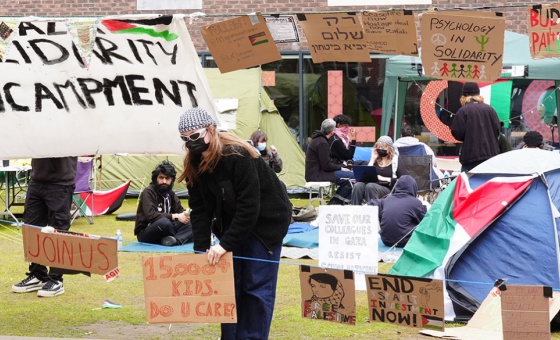This is the last article you can read this month
You can read more article this month
You can read more articles this month
Sorry your limit is up for this month
Reset on:
Please help support the Morning Star by subscribing here
Years like water
By Nadia Sablin
Dewi Lewis Publishing, £35.00
THE Russian-born photographer Nadia Sablin (born in 1980) grew up in the small village of Alekhovshchina, north-west of St Petersburg in the then Soviet Union. She and her family left in 1992, fleeing the “lawlessness and violence” unleashed by the collapse of the Soviet Union and the onset of wild-west capitalism, to settle in the US.
Sablin returned to the village in 2008 and for the following decade documented the life of the people. She says that immediately: “I felt a connection with the world of my childhood. And when I walked into the house my grandfather built with hand-hewn logs, the tight knot which had been constricting my chest began loosening. The house smelled of pinecones burning in the samovar and my auntie’s blintzes.
“It was a magical experience, this transport to a different time, and it was steeped in memories of stories, both real and imagined... Still, I missed it, even as I learned to fear it from my new home in the West. I missed the smell of linden trees in our courtyard after rain, and the sound a train makes on the tracks, and the angle of the light.”
Her images reflect this dichotomy of feeling: on the surface, a fairy-tale village straight out of a Chagall painting, a travelling back in time, but also of a people abandoned, bypassed by civilisation.
The series loosely follows the lives of four interconnected families.
Sablin’s images are mostly straightforward, posed, but relaxed portraits of the villagers in their family units, in their homes or sitting on their doorsteps, small children splashing each other in the nearby forest streams, teenagers lounging about, smoking, as teenagers everywhere do.
These are interspersed with romantic summery, autumnal or wintry images of the surrounding scenery, the pastel-coloured rays of sunshine filtering through the tree trunks, picking up the ferns and fungi on the woodland floor.
All this is, of course, also deceptive. Rural life can be hard, and such images, static as most of them are, do hide problems of alcoholism, family strife, domestic violence and poverty.
The images left me longing for the background stories and anecdotes that these people could tell. I want to know more about their lives beyond the voyeuristic. What was life like before the collapse of the Soviet Union and what is it like now.
These photos, engaging as they are, cannot answer such questions. Despite the undoubted fascination for metropolitan North American audiences, this collection portrays a rustic way of life that was, not many decades ago – and in many places still is – typical of many rural communities around the world.
The press release blurb for the book is unfortunately somewhat disingenuous and condescending when it talks about “unsupervised” children and “adults struggling for survival… a world that doesn’t fit into the neat narrative of ‘Putin’s Russia’ put forth by both Eastern and Western media.” It is, it declares, “a decade-long look at a small Russian village, its inhabitants, ramshackle institutions, nature, and mythology.”














